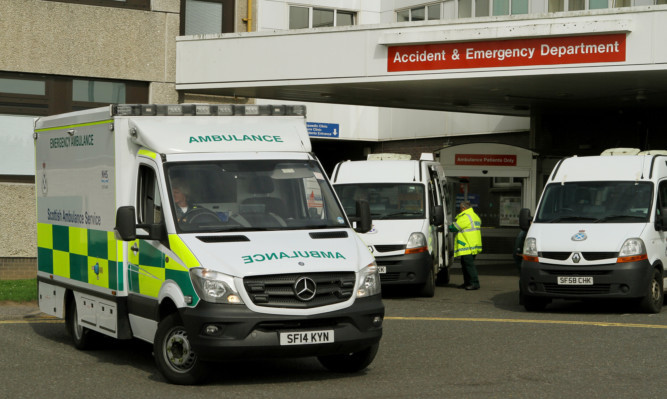The Scottish Ambulance Service has missed a target to respond to at least three-quarters of life-threatening emergencies within eight minutes.
Annual figures published by the service show that 72.2% of such calls were dealt with in that time in 2014/15, down from 73.9% the previous year.
They also reveal an 11.5% increase in complaints, up to 530 for the year.
The average response time for life-threatening calls was maintained at 6.6 minutes, compared to 9.5 minutes a decade ago.
Ambulance staff surpassed a separate target to answer 90% of 999 calls within 10 seconds.
The service said it had faced a “challenging” 12 months with continued growth in demand as well as financial constraints.
Despite this, more lives were saved and more patients were treated in their local communities, it said.
In particular, there was an increase in the number of out-of-hospital cardiac arrest lives saved from 509 in 2013/14 to 658.
David Garbutt, chairman of the Scottish Ambulance Service, said it had met financial targets for the year, achieving efficiency savings of £8.7 million.
He said: “Despite an exceptionally busy year for our frontline teams, the service is saving more lives than ever before.
“In the last ten years demand has increased by 55% and last year emergency ambulances responded to almost 750,000 incidents.
“Around 20% of these cases are potentially life-threatening and more than a third are requests from GPs, referrals from 111, hospital transfers, community alarms and other emergency services.
“While the response time is an important aspect of pre-hospital care, the clinical expertise of ambulance teams is key to maintaining good patient outcomes.
“The ongoing development of clinical care skills is reflected in the consistently high survival rates that are now being achieved in Scotland.
“Our staff are working very hard in an extremely busy environment and every day they continue to provide compassionate, evidence-based care for patients in often very challenging circumstances.
“Their commitment and dedication to patients is exceptional.”
